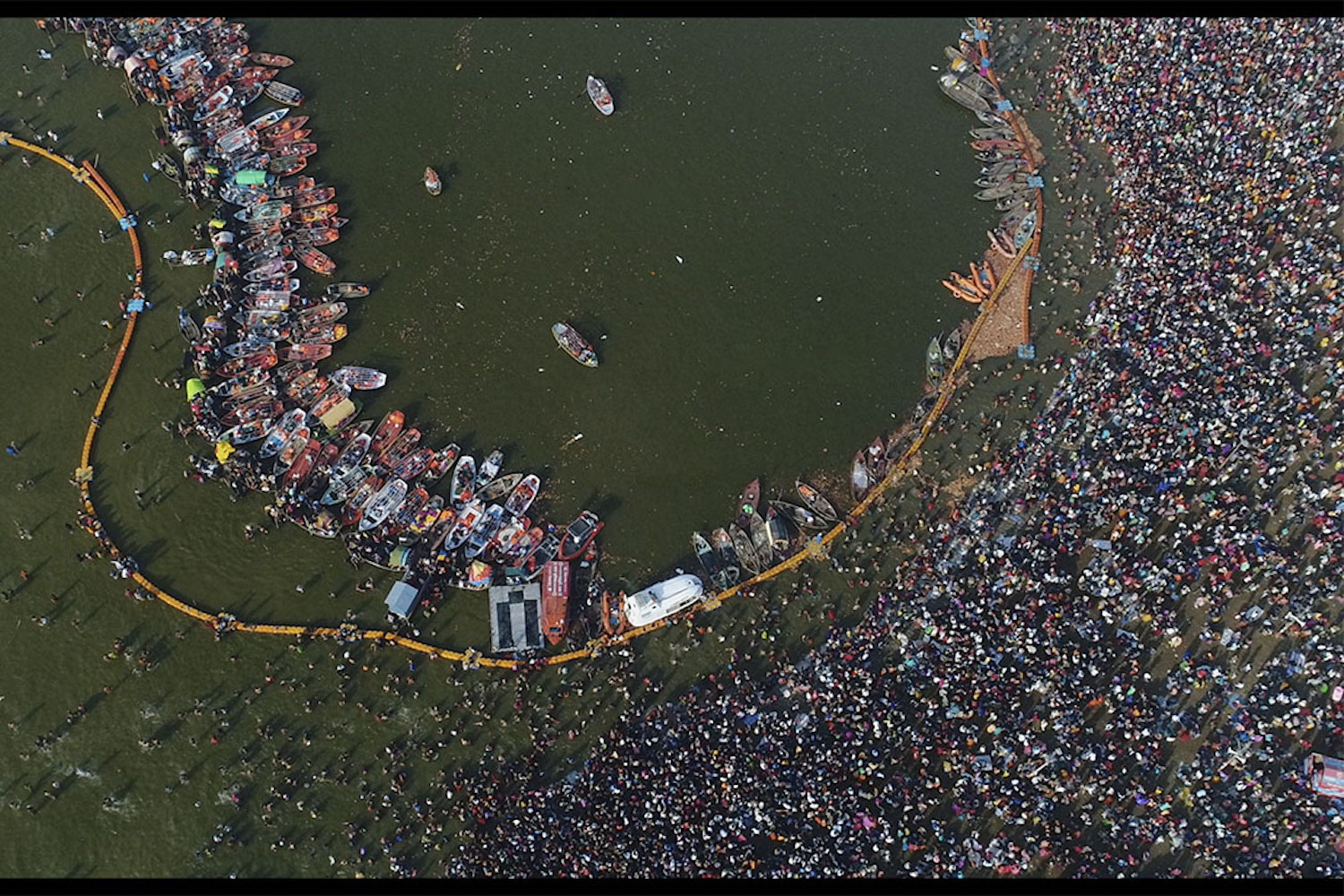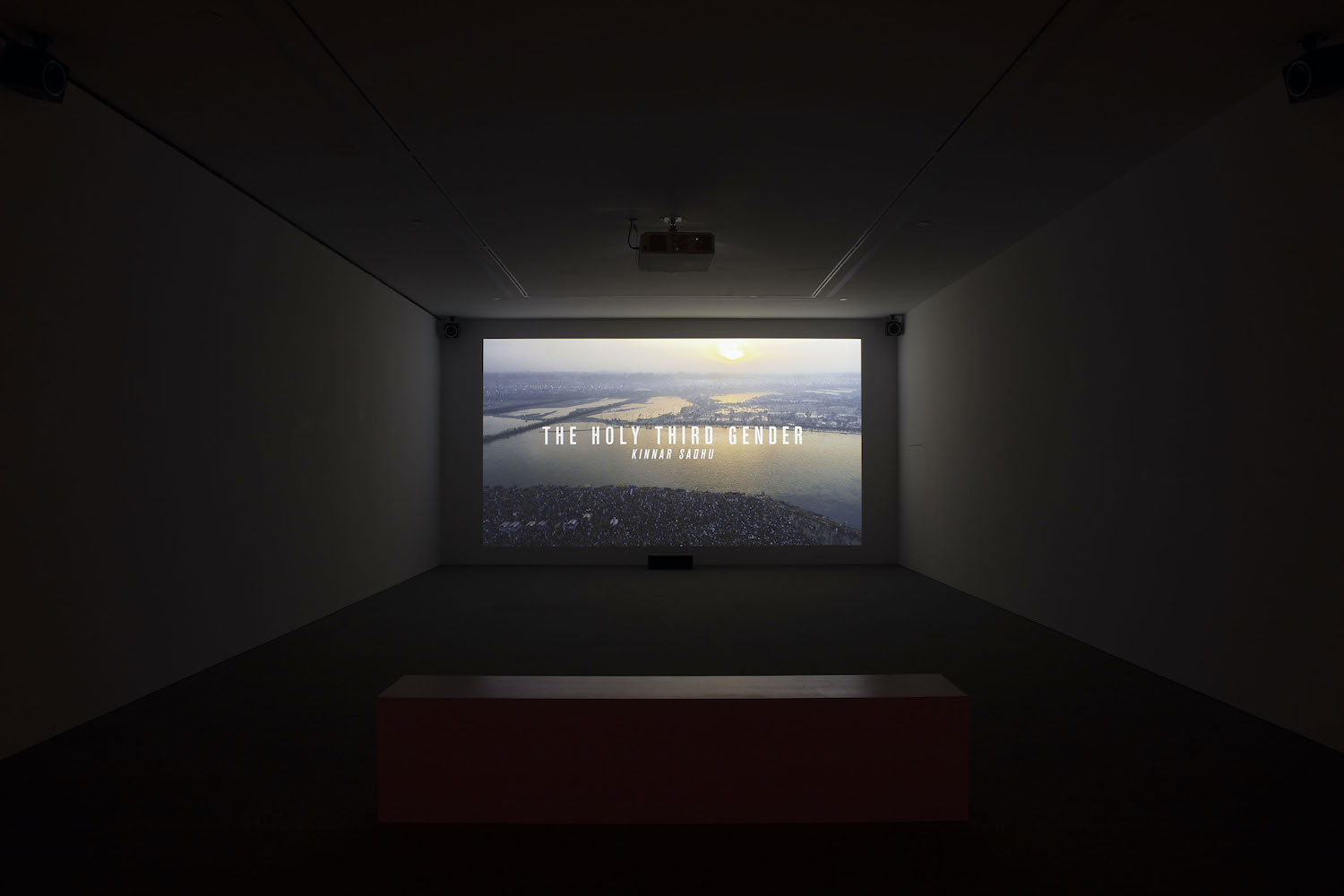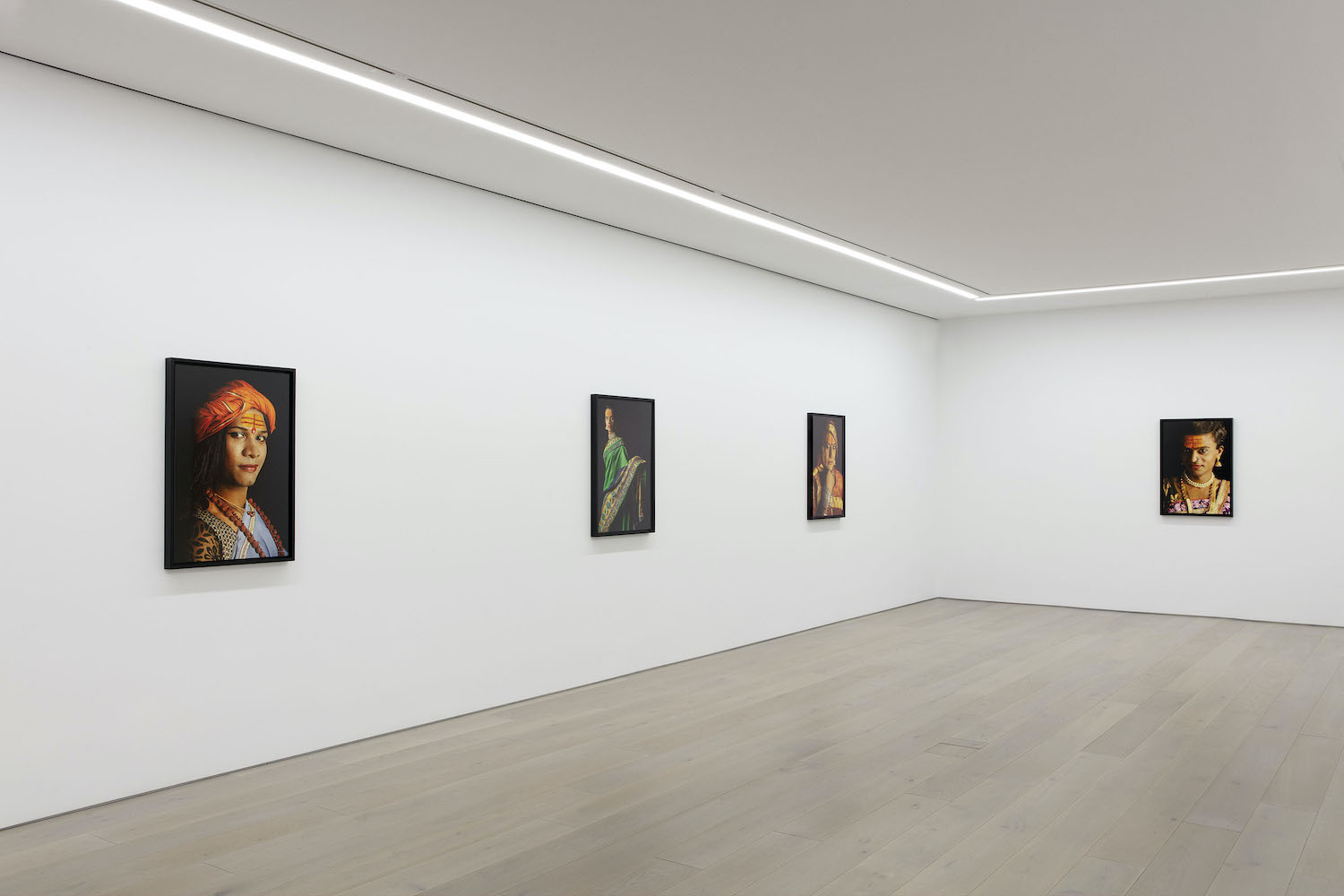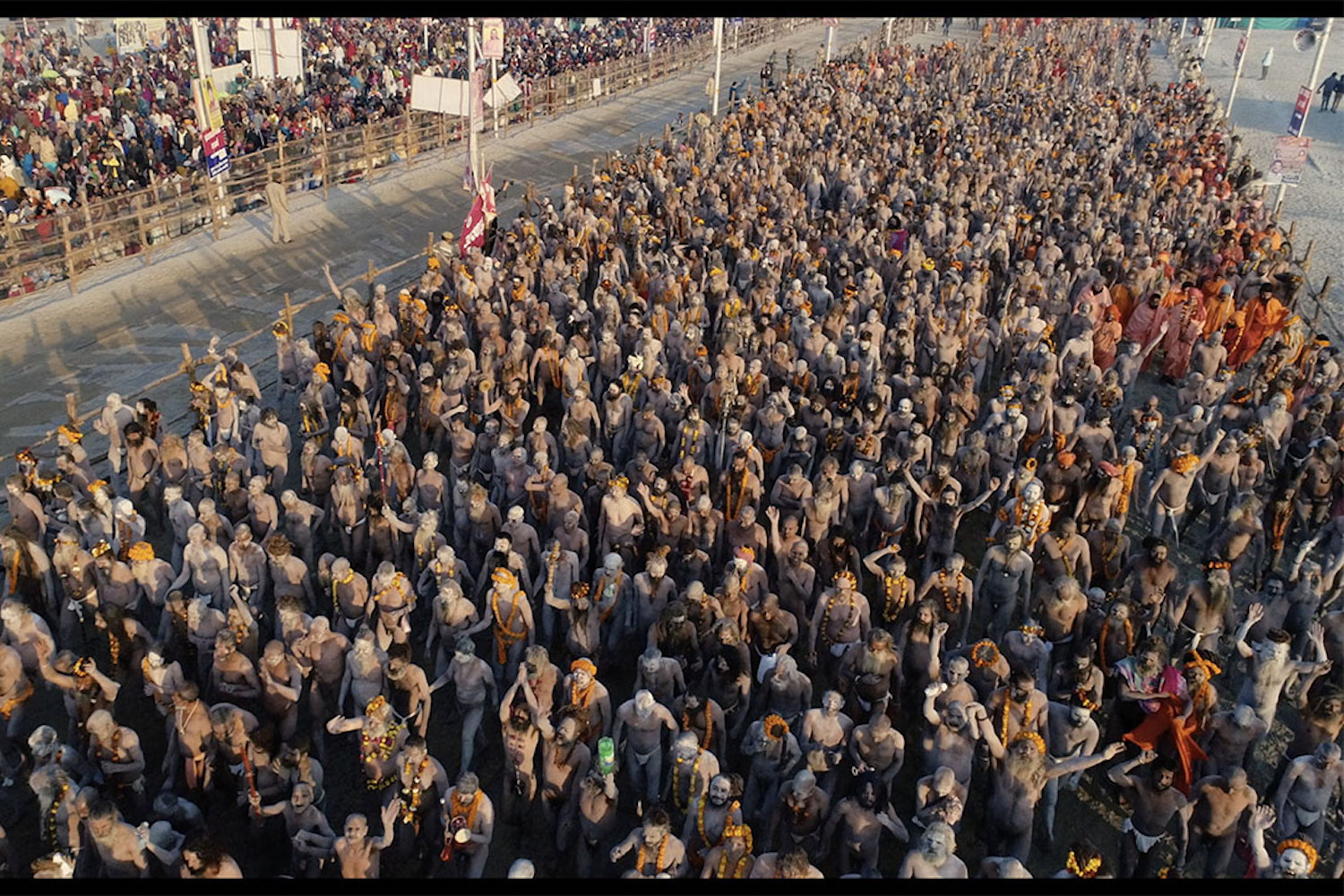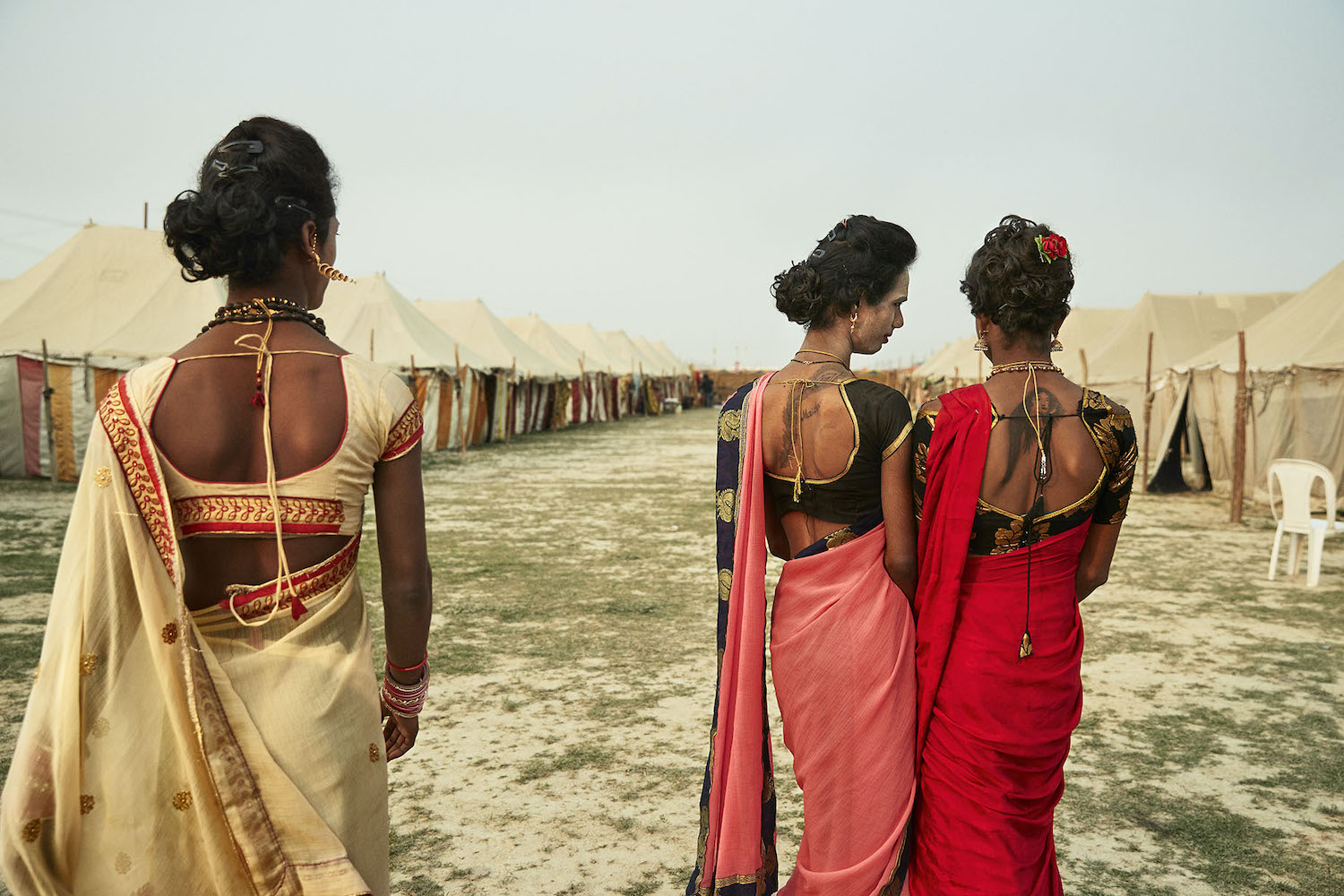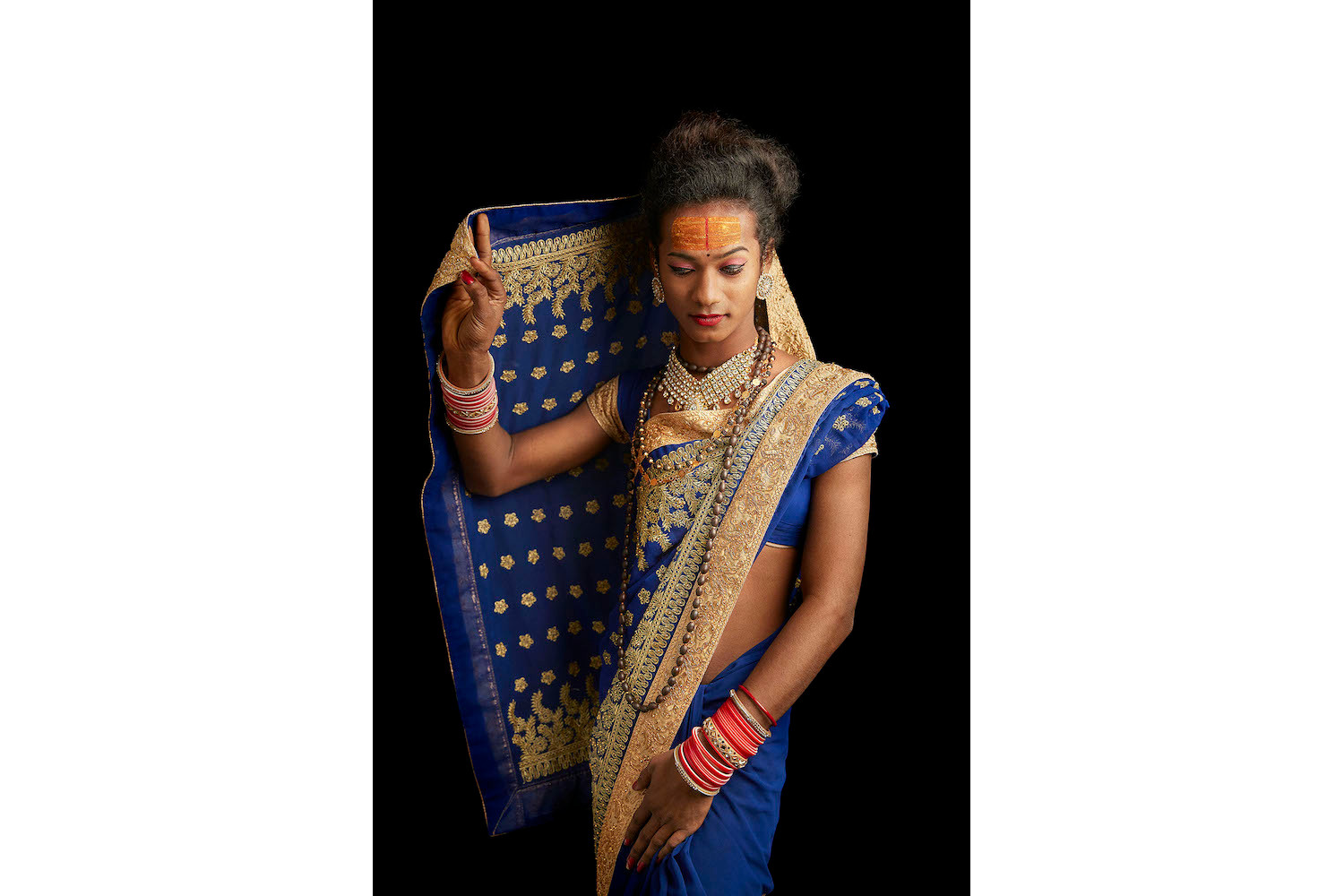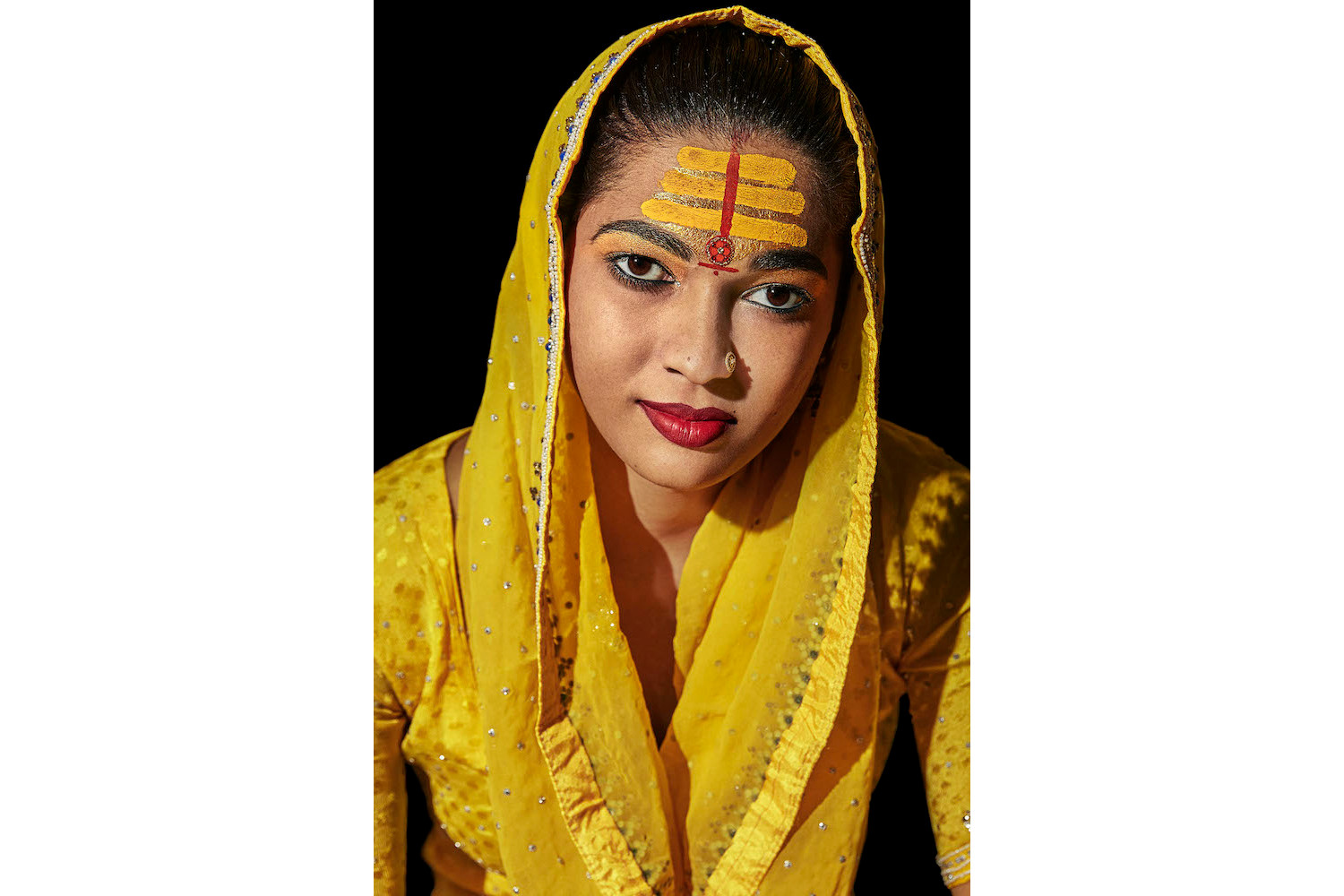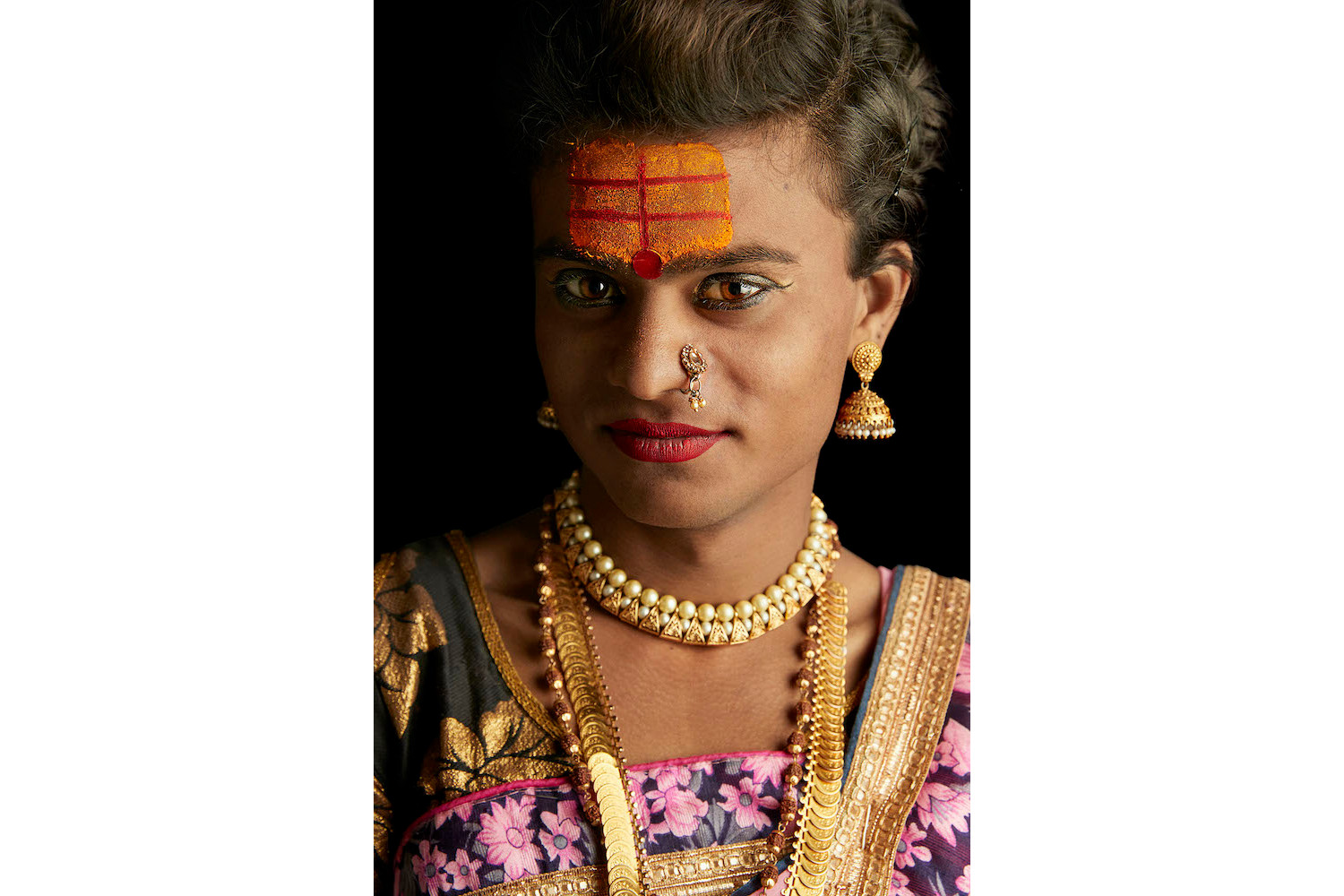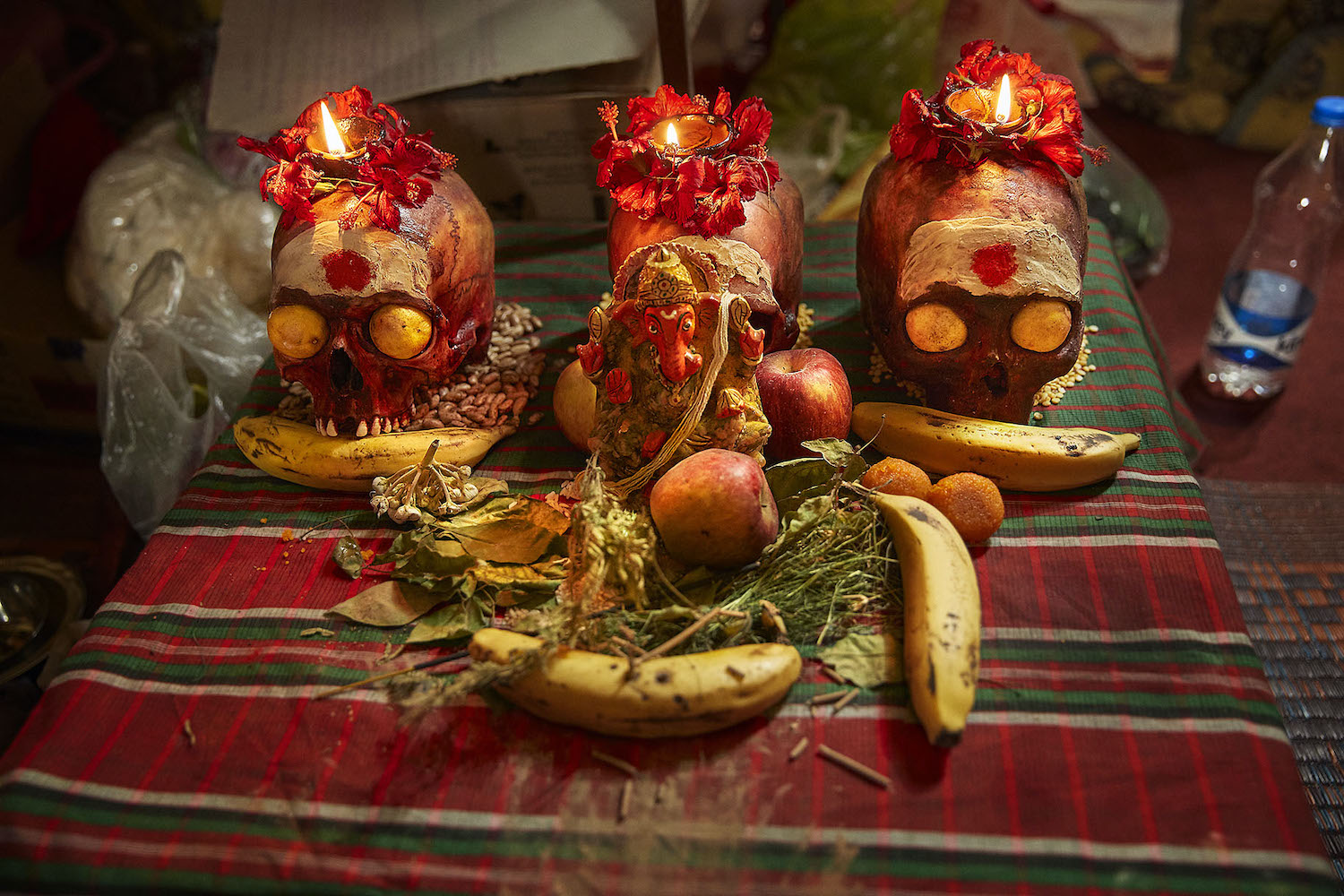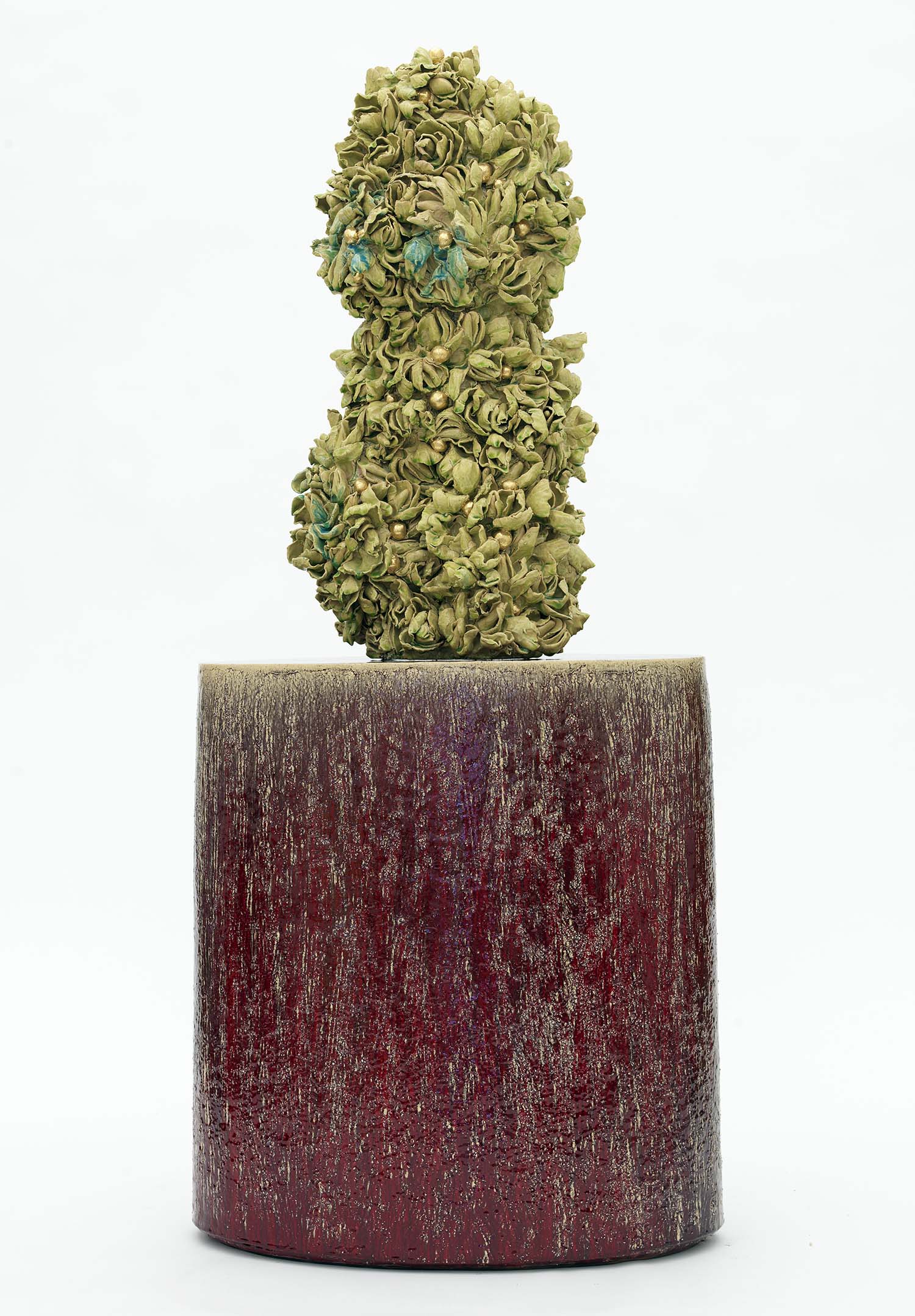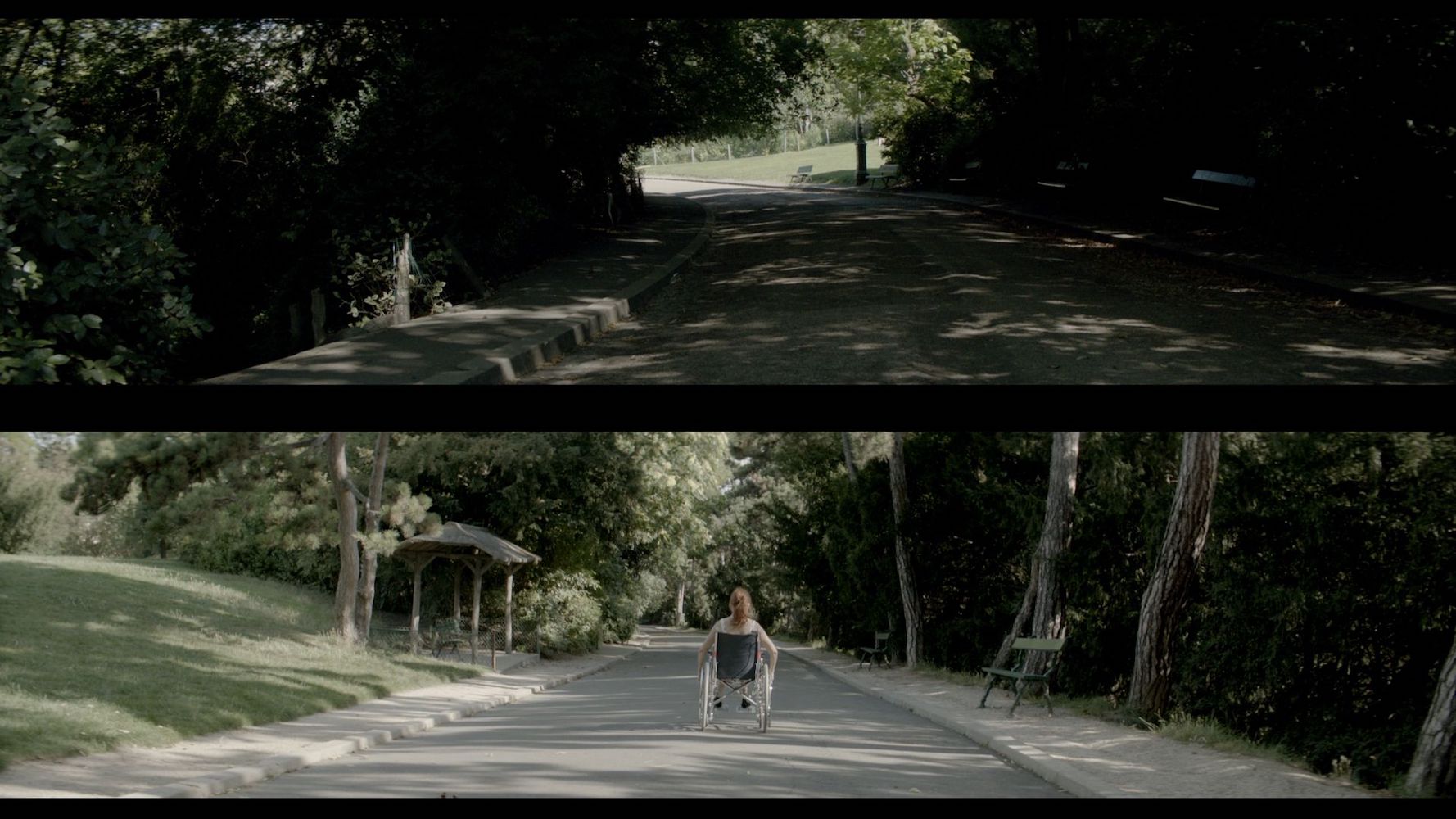The sacred transgender ascetics of Hindu-Jain tradition – known as Kinnar Sadhus – occupy a singular position within our combative global discourse regarding gender roles, pointedly within the context of religion. A mythological grace is afforded to these chosen non-binary individuals, by way of understanding the androgyny and polytheistic nature of Hindu and Jain deities. This notion of holy sexual ambiguity can be seen to have created a space within India for a modern human existence that elides the acute paradigm of male/female roles. While the country’s ancient caste system and abated echoes of British Colonial rule casts a shadow of latent violence onto this subversion of identity classification, there is an underlying spiritual belief that provides an opening for national celebration of sexual multiplicity.
Guillaume Ziccarelli’s exhibition, The Holy Third Gender: Kinnar Sadhu at Galerie Perrotin New York sees the French artist and cinematographer explore this divine narrative, honing in on the subject by way of chronicling the ritual of the Kumbh Mela festival. Kumbh Mela positons the transgender Kinnars in a singular space of reverence. This duodecennial ceremony – which Ziccarelli filmed in the city of Allahabad in 2019 – occurs across four sites of pilgrimage throughout India, during which millions of disciples of Hinduism and Jainism engage in ritual cleansings and euphoric processions along the Ganga River.
The Holy Third Gender is centered on a documentary short in which scenes of naked gambols are interspersed with one-on-one interviews between the artist and select Kinnars, as well as with their select holy equivalents: the Kinnar Sadhus. The film betrays Ziccarelli’s commercial background with its slick editing, pulsations of rich circumambient sound and sensational frenetic pace, so at odds with the glacial, punishing tread of most contemporary video art. The character of Ziccarelli’s interviews tends to be one of unabashed vulnerability, as the Kinnars orate their personal histories of transition and becoming. All too often these stories involve a self imposed exile, in which the individual leaves their family in order to cross the border into the a self-determined sexual identity: that of India’s legally recognized third sex (brought into effect in 2014.) The allure of Ziccarelli’s masterful handling of videography is heightened by the brevity of the work. Clocking in at just over eight minutes, the film tantalizes in its provision of such compelling sociopolitical content, delivered with the fetishistic approach of the colonial gaze.
Many of the players within this film are fixed within their liminal sexual state by way of a series of digital photographs, which the viewer encounters prior to observing the artist’s documentary. Intensely spotlit photographic prints showcase individual Kinnar Sadhus posed against an atonal backdrop. Close-up headshots and classically posed portraits of sari adorned non-binary actors mimic the glamor and veneration afforded to Bolly/Hollywood starlets. While the photographs strive to honorably apotheosize these Eastern proponents of sexual freedom, their elegant formality cleaves the narrative between the honorific stills and the unaffected intimacy of Ziccarreli’s documentary recordings. To consider the exhibition as a holistic portrait of queer identity in India is to observe two distinct sides of a multi-faceted coin, in which stagnant images and shifting frames reveal a radical modernity taking form within an ancient divine system.

